Cartoons of The New Yorker
Cartoons of The New Yorker
Cartoons of The New Yorker

New York City custom car and motorcycle culture has long been overshadowed by the left coast designers and machines. In this unprecedented book, urban anthropologist Michael McCabe presents the stories, innovators, and machines behind NYC car and motorcycle builders. He reveals an outsider’s tale filled with passion, creativity, and high-speed thrills. Based on a year’s worth of interviews and photo shoots with nearly 40 custom builders, McCabe offers unique access to their private, creative lives and impressive collections of machines in garages and workshops throughout the five boroughs. Legendary urban personalities like “Big Daddy” George LeBlanc, Mel Bernstein, and Dick Zigun tell the history of NYC horsepower, including nostalgia for the days of the NASCAR-sanctioned Weissglass Speedway on Staten Island, illegal street racing, car clubs, and shows. Voices from the groundswell of younger builders, like John Copeland, Sal Pepi, and Pete Ranko, complete this collection of oral histories and images and show respect for the city’s hands-on narrative. With nearly 800 images of custom cars and motorcycle, this history is ideal for builders, car collectors, and urban historians.
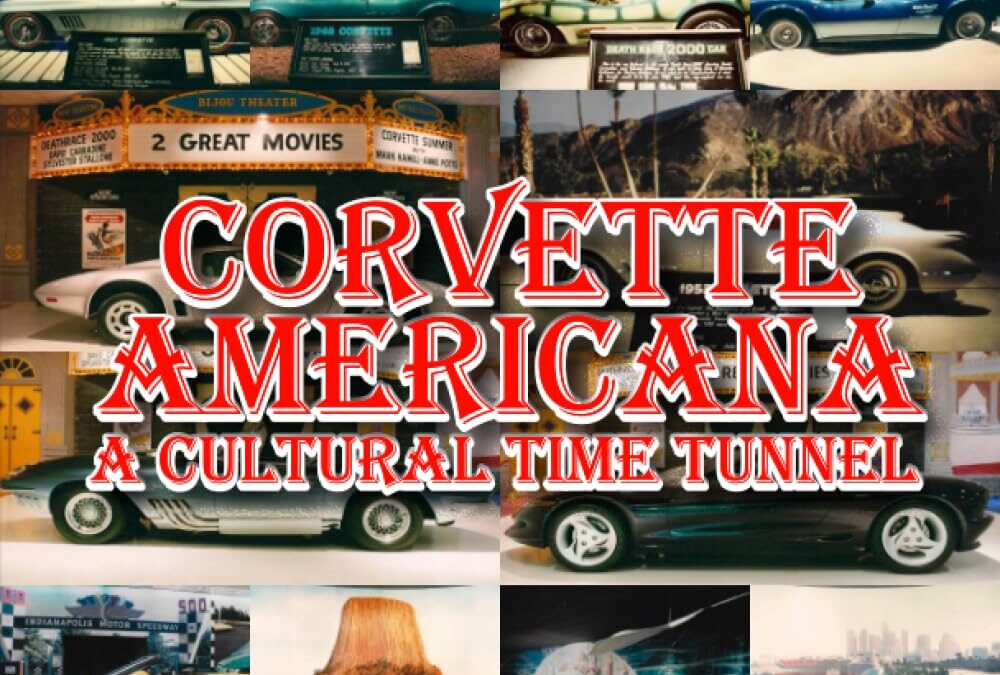
Allen Schery is perhaps the first Anthropologist to have designed a Car Museum. Prior to his design we generally only see rows of cars with small signs. Allen’s unique idea was to place each car in a set featuring a giant 15 x 30-foot photo mural that utilized a curved dioramic wall to give a 3-D effect incorporating a symbol of American Culture as a backdrop. Allen then took several trips around America logging in some 20,000 miles of trips procuring pictures of Mt. Rushmore, Niagara Falls, The Golden Gate Bridge, the Alamo, and other well-known American Landmarks. Each set featured real earth scenes and stage lighting. The Corvette was used as a time-coordinated symbol of American Culture to anchor the exhibit. He then theorized that as the original owner of each car placed the key in the ignition he was surrounded by the culture of a bygone year of Americana. He sought to recreate the sights. sounds and memories of that bygone culture by using the music, television, and movie snippets of that year along with slides of news events and time-coordinated artifacts. The Museum won many awards as well as being chosen as one of the ten best museums in New York State. Each room became a time capsule to that year with the entire museum a giant time tunnel.

In 1969, two of the most famous sports car manufacturers in the world, one German and one Italian, built what even today are considered the epitome of what a race car should be. The ensuing fight between the Porsche 917 and the Ferrari 512 S, driven to the limit by some of the sport’s greatest stars, has forever been regarded as a special two years in sports car racing, captivating a global audience and providing the storyline for Le Mans, an epic Hollywood film. The legendary Porsche vs. Ferrari duel started at the Daytona International Speedway in January 1970, and although the battle lasted less than two years, ending at Watkins Glen in the summer of 1971, it left a trail of memories in its smoky wake. EIGHTY FOUR HOURS OF ENDURANCE captures many of those memories in a richly illustrated book that bundles together the six American rounds of the FIA World Championship for Makes in 1970 and 1971. Daytona, Sebring and Watkins Glen. 24, 12 and 6 hours in length. Times two. Featuring 520 photographs, 230 black & white and 290 color, and supplemented by detailed race reports, results and maps, you’re taken onto the high banks at Daytona, down the concrete runways of Sebring and around the short, fast Watkins Glen circuit in upstate New York. The drivers included on the 244 pages of the book are a veritable who’s who of 1970s motor racing—Andretti, Ickx, Redman, Siffert, Rodriguez, Elford, Gurney, Larrousse, Cevert, Oliver, Posey, Beltoise, to name a few. EIGHTY FOUR HOURS OF ENDURANCE takes you back to the grid, onto the track, into the pits, around the paddock and behind the scenes for a memorable ride through time.
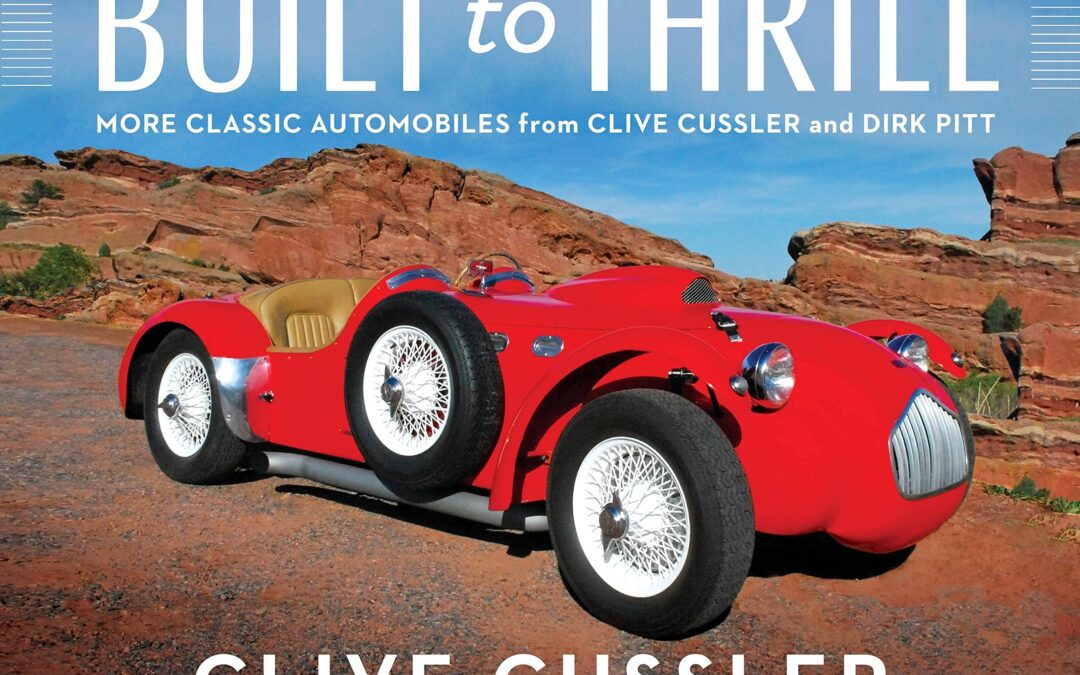

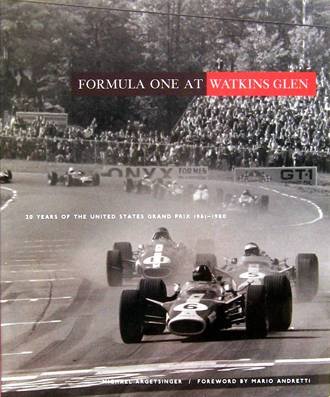
Formula One at Watkins Glen presents a vivid and often intimate account of the 20-year period (1961-1980) that the United States Grand Prix was held at the classic upstate New York track. Author Michael Argetsinger was a young man when his parents, Cameron and Jean, first brought Formula One to Watkins Glen, and he grew up working with racing as the family business. He brings us his firsthand perspective on this unforgettable era.

Stock-car racing star, country singer, and sports broadcaster Kyle Petty shares his familial legacy, intertwined with NASCAR’s founding and history, in Swerve or Die―written with Pulitzer Prize-winner Ellis Henican, the New York Times bestselling coauthor of In the Blink of an Eye.
“Born into racing royalty. The only son of NASCAR’s winningest driver ever. The grandson of one of the sport’s true pioneers. The nephew of our very first Hall of Fame engine builder. It’s quite a family to represent, and through it all, I’ve somehow managed to keep being Kyle.”
Kyle Petty won his very first stock-car race, the Daytona ARCA 200, in 1979 when he was eighteen. Hailed as a third-generation professional NASCAR racer, he became an instant celebrity in circles he had been around all his young life. Despite being the grandson and son of racing champions Lee Petty and Richard Petty, Kyle didn’t inherit innate talent. Working in his family’s North Carolina race shop from an early age, he learned all about car mechanics and maintenance long before he got behind the wheel. And although Kyle continued the family business, driving “Petty blue” colored cars emblazoned with his grandfather’s #42―a number once used by Marty Robbins―his career took a different route than his forebears’.
In Swerve or Die: Life at My Speed in the First Family of NASCAR Racing, Kyle chronicles his life on and off the racetrack, presenting his insider’s perspective of growing up throughout the sport’s popular rise in American culture. In between driving and running Petty Enterprises for thirty years, Kyle took some detours into country music, voiced Cal Weathers in Pixar’s Cars 3, and started his annual motorcycle Kyle Petty Charity Ride Across America. And when his nineteen-year-old son Adam, a fourth-generation racing Petty, tragically lost his life on the track, Kyle founded Victory Junction, a camp for children with chronic and serious medical conditions in Adam’s name―with help from Academy Award-winning actor and motorsports enthusiast Paul Newman.
Filled with NASCAR history, stories of his family’s careers, and anecdotes about some of stock-car racing’s most famous drivers, Kyle’s memoir also tackles the sport’s evolution, discussing how welcoming diverse racers, improving car and track safety features, and integrating green technology will benefit NASCAR’s competitors and fans in the future.
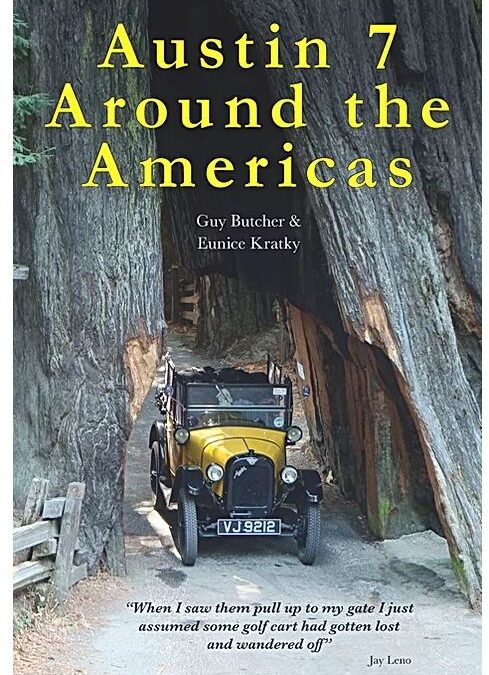
Here is the story about a dream, a dream that first appeared soon after buying the first of many Austin 7’s in 1966.
Inspired by Tschiffely’s Ride (Buenos AIres to New York in 1925 with horses and mules), Coleman’s Drive (Buenos Aires to New York in a 1925 Austin 7, 1959-60) and Austins over the Andes by Vince Leek.
It tells of the designing, building and planning of the journey from Baltimore to Alaska and onto Punta Arenas in a 1936/28 Austin 7 during 2012/13 by the Authors. It takes the form of a diary:
Eunice wrote a blog on the website and Guy used Facebook as a daily record.
To reflect on the immense generosity of the many people without whom this would never have happened ALL the proceeds of the sales of the book are being donated to Dame Hannah Rogers Trust (www.discoverhannahs.org).
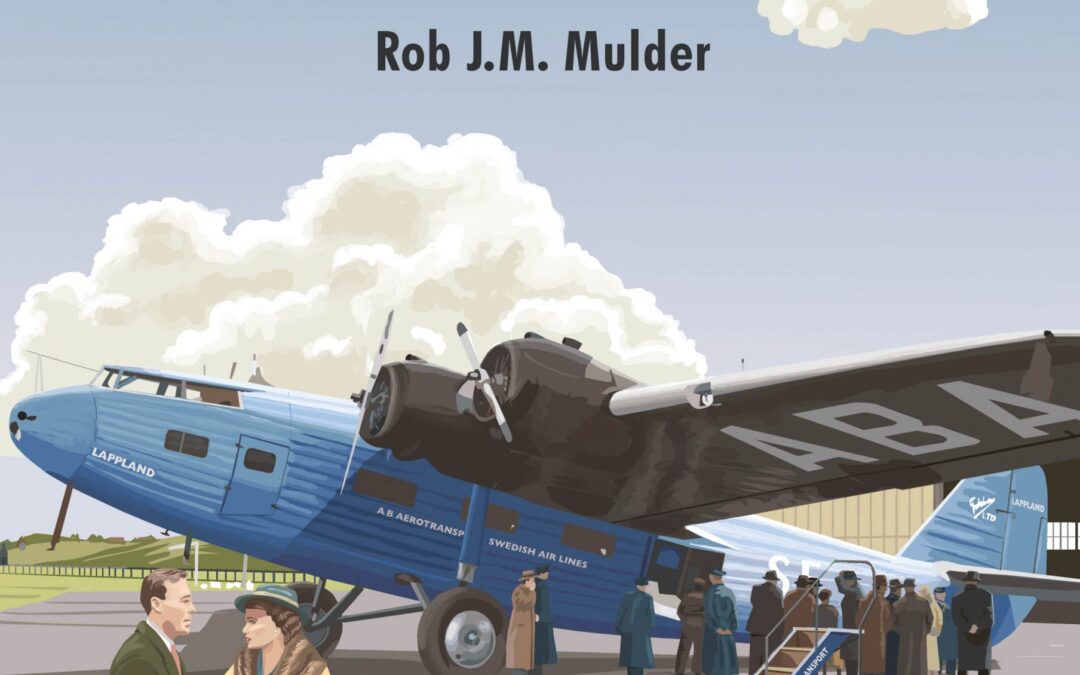
In September 1929, Anthony Fokker presented his first four-engine aircraft in the United States of America: the Fokker F-32. It could carry up to 32 passengers and was at its time the largest and most luxurious aircraft in the world. Then, unexpectedly, came the Black Thursday at the New York stock exchange and the world changed… Ten aircraft were either completed or in various stages of assembly, before the production was stopped.
The idea of a four-engine aircraft caught on with KLM Royal Dutch Airlines. Albert Plesman, its managing director, committed to buy aircraft for the Amsterdam-Batavia (now Djakarta, Indonesia) service. The type was to be called the Fokker F XXXVI and was designed to accommodate 32 passengers and a crew of four. A scaled-down version, designated F XXII, was intended for European services carrying 22 passengers. Unfortunately for Fokker, the F XXXVI and F XXII were no immediate success due to the introduction of the far more modern and faster Douglas DC-2. Besides KLM, the only other customer was the Swedish airline AB Aerotransport who purchased a single aircraft.
KLM used their F XXXVI and F XXIIs on the European routes, while AB Aerotransport only used its F XXII on the Malmö-Copenhagen-Amsterdam service. KLM and AB Aerotransport lost each one of their aircraft in accidents, while the remaining were sold to the UK and operated by Scottish Aviation and the RAF. In this book we follow the life of the F-32, F XXXVI and F XXII aircraft and look at other Fokker four-engine projects. This book is illustrated with many photographs, tables, and colour profiles by Juanita Franzi.
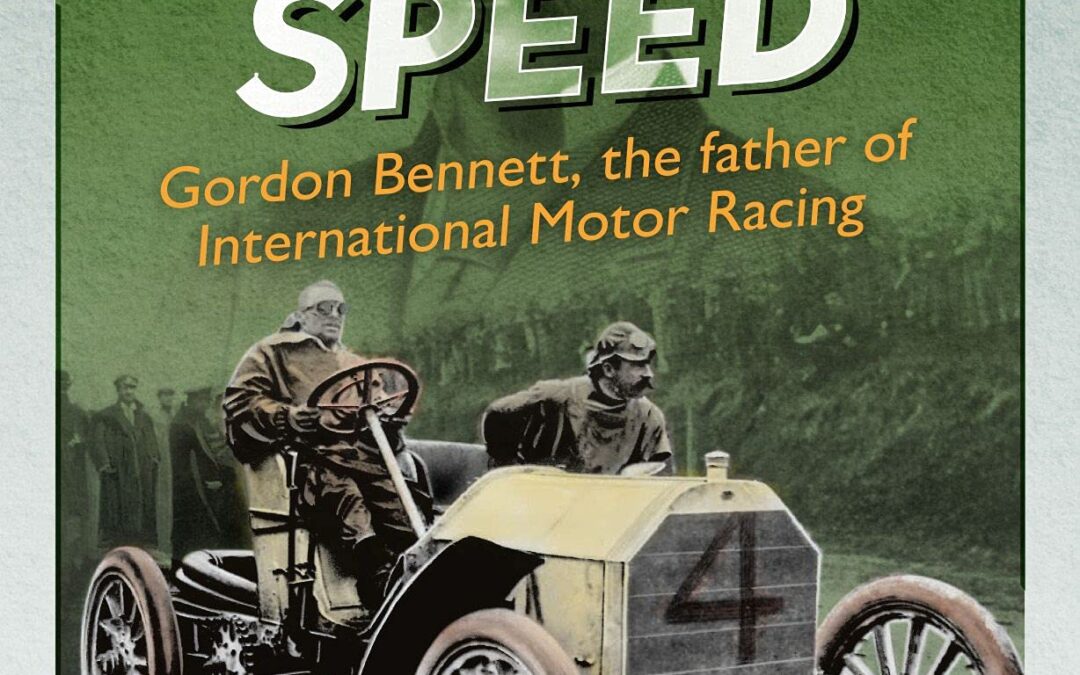
A complete history of the main motoring events and races of the Gordon Bennett Cup.
James Gordon Bennett Jr. (1841–1918) was the spoiled only son of the millionaire founder and publisher of the New York Herald. In addition to taking over publishing duties from his father, Bennett led a dynamic and daring life. He was a tireless supporter of the pioneering fields of technology and sports, always with speed in mind. In 1899, fascinated by new motor cars, he founded the Gordon Bennett Cup. The inaugural race took place in 1900, and though only three countries entered the inaugural race in 1900, it was the beginning of a massive phenomenon. Despite challenges of widespread anti-car sentiment, bureaucracy, speed limits, safety, and design challenges, over the next few years, Bennett grew spectatorship from less than one hundred to eighty thousand.
Bennett’s dedicated promotion of early motor-car racing gave a boost to the global auto industry and provided a foundation for the international racing scene that still excites us more than a century later. Every Gordon Bennett Cup race is documented here with an account of the drivers, the cars, the courses, and the thrilling highs and lows of the events
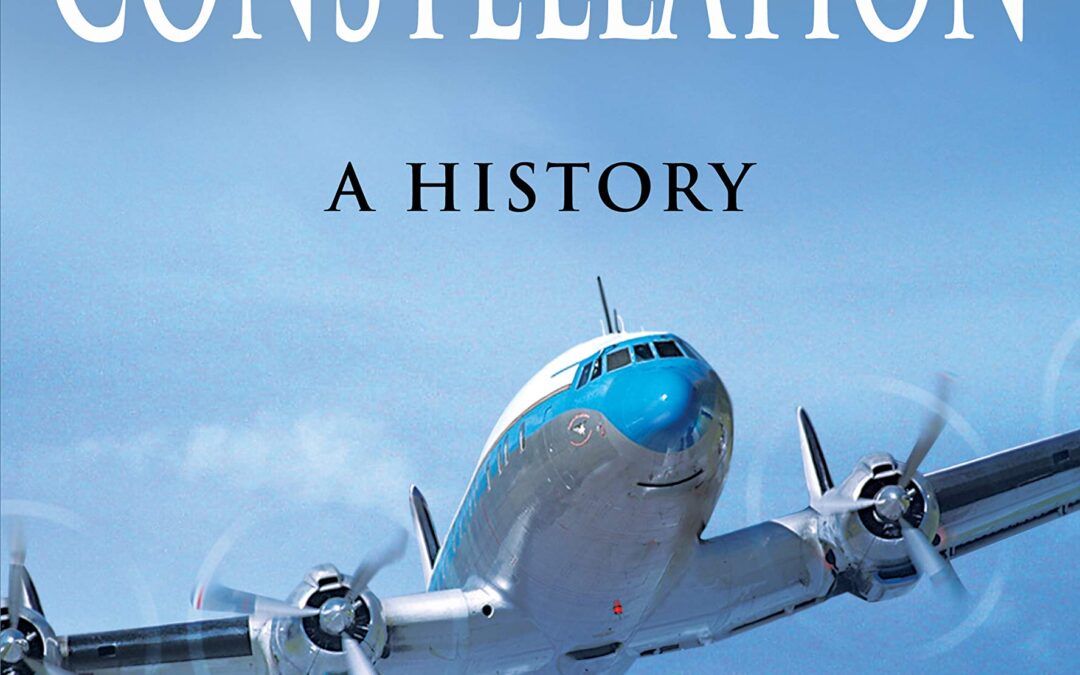
Clarence ‘Kelly’ Johnson’s design for the Lockheed Constellation, known affectionately as the ‘Connie’, produced one of the world’s most iconic airliners.
Lockheed had been working on the L-044 Excalibur, a four-engine, pressurized airliner, since 1937. In 1939, Trans World Airlines, at the instigation of major stockholder Howard Hughes, requested a 40-passenger transcontinental aircraft with a range of 3,500 miles, well beyond the capabilities of the Excalibur design. TWA’s requirements led to the L-049 Constellation, designed by Lockheed engineers including Kelly Johnson and Hall Hibbard.
Between 1943 and 1958, Lockheed built 856 Constellations in numerous models at its Burbank, California, factory – all with the same distinctive and immediately recognizable triple-tail design and dolphin-shaped fuselage.
The Constellation was used as a civil airliner and as a military and civilian air transport, seeing service in the Berlin and the Biafran airlifts. Three of them served as the presidential aircraft for Dwight D. Eisenhower. After the Second World War, TWA’s transatlantic service began on 6 February 1946 with a New York-Paris flight in a Constellation. Then, on 17 June 1947, Pan Am opened the first-ever scheduled round-the-world service with their L-749 Clipper America.
In this revealing insight into the Lockheed Constellation, the renowned aviation historian Graham M. Simons examines its design, development and service, both military and civil. In doing so, he reveals the story of a design which, as the first pressurized airliner in widespread use, helped to usher in affordable and comfortable air travel around the world.
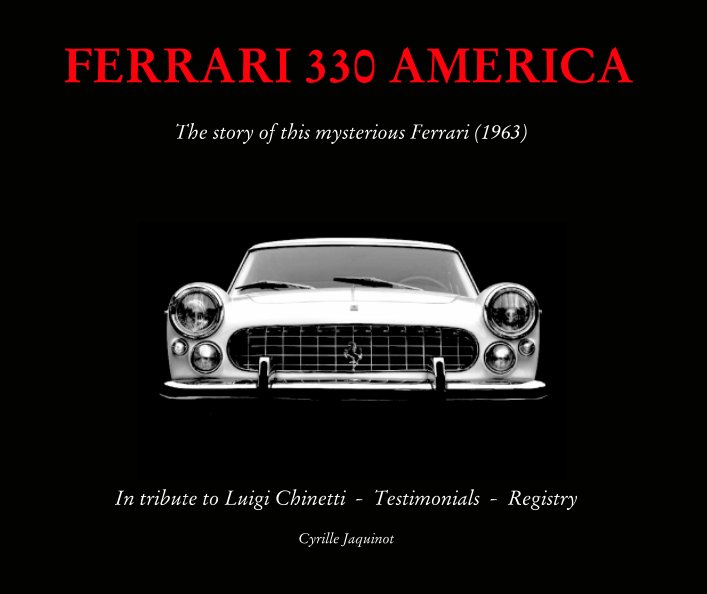
The Ferrari 330 America if it is unknown to the public, however, deserves to be a Ferrari in its own right. Often seen as the interim model between the 250 GTE and the 330 GT 2+2, it remains a mystery as it has a body of the 250 GTE Series III Pininfarina with a 4-liter Colombo 12-cylinder engine derived from the 400 Superamerica. Rare car because only 50 were built by Pininfarina on the initiative of Luigi Chinetti, the famous Ferrari importer located on the East Coast of the USA with his company Luigi Chinetti Motors Inc. of Manhattan, New York.
This unique book is a tribute to Luigi Chinetti, the first man who was able to convince with charisma and enthusiasm Enzo Ferrari on Christmas eve 1946 to become a real car manufacturer. Ferrari’s history with Chinetti will remain inseparable forever.
The foreword is by the great American pilot Mario Andretti.
The first part of this unique book is devoted to the life of Luigi Chinetti until 1964.
The history of Ferraris Americas, Superamericas is discussed until the arrival of the 250 GTE 2 + 2 then finally the mysterious 330 America.
A register of the 50 units manufactured in 1963 on more than 200 pages with testimonies from the famous Ferrari world.
A complete book in English by the French historian Cyrille Jaquinot which will be a reference in the libraries of Ferrari enthusiasts.
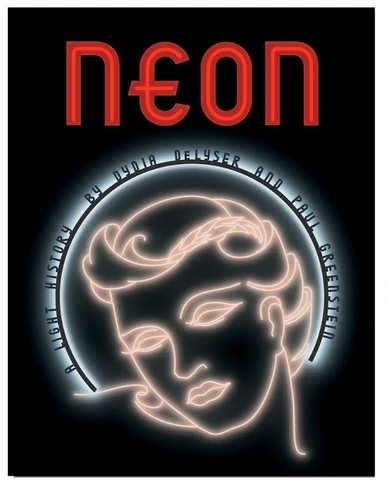
Since the late nineteenth century neon signs have inspired devotion and derision, drawing people to them and transforming the American landscape in the process. In Neon: A Light History Dydia DeLyser and Paul Greenstein unite the approaches of scholar and signmaker in the first book to detail neon’s rich history and geography from the inside. Lavishly illustrated and invitingly designed, this short book’s compellingly written expert analysis dispels long-held myths and misunderstandings about the inventors and technologies, the art and commerce, and the cities and communities that have made neon signs such iconic parts of the American landscape.
Revealing neon signs as active agents in sweeping cultural, economic, and political changes nationwide, DeLyser and Greenstein introduce readers to inventors and “tube benders,” business owners and customers, politicians and passersby, sign detractors and sign afficionados, architects and restoration specialists—a compelling cast of characters, many of whom, they show, continue to keep neon vibrant today. Taking readers inside the signs themselves, the authors show how each sign, whether historic or contemporary, is made by skilled hands—today just as they were over one hundred years ago.
Drawing from over a decade of in-depth archival and ethnographic research as well as more than four decades of experience in the sign industry, DeLyser and Greenstein use Los Angeles—not New York or Las Vegas—as focal point, showing how neon signs have catalyzed urban change, and how they continue to hold appeal for our changing communities—developing with the automobile and car-and-consumer culture in the twentieth century, expanding from cities to towns, and along highways to remote roadside outposts. From the earliest luminous tubing in the 1890s to the artistic creations of today, from community-funded restorations of historic signs to ordinary-seeming business signs that have become community icons, DeLyser and Greenstein show how, just as neon signs lit our past, they can now light our shared future.
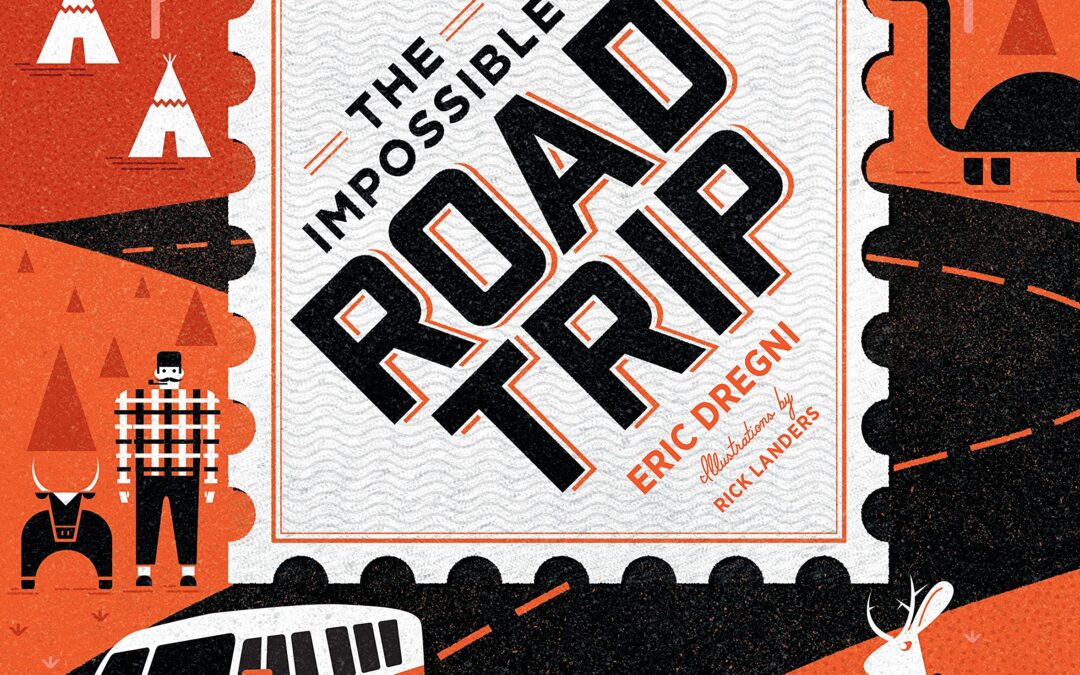
Filled with color photography, entertaining site descriptions and histories, and five unique infographic map illustrations, The Impossible Road Trip is your ultimate look back at America’s most famous—and quirkiest—roadside attractions, past and present.
The great American road trip is back. With its advantages for your health, budget, and the environment, now is the time to plan the road trip you have always dreamed of taking.
Following in the great tradition of the mid-century golden age of car travel, join the new wave of road warriors with a targeted itinerary chosen from the 150 roadside attractions explored in this colorful guide. From famous to quirky and covering all 50 states, author Eric Dregni gives you an unprecedented look at the breadth of roadside attractions in the US, illustrated in part by the photography of architectural critic and photographer John Margolies (1940–2016). Specially commissioned infographic map illustrations capture the spirit of mid-century automobile travel.
Each site depicted is accompanied by a lively and insightful history and color imagery. From autumnal New England to the gothic South, from the homey Midwest to the great expanses of the Desert Southwest, the dizzying heights of the Rocky Mountains, and the breathtaking Pacific Coast, The Impossible Road Trip encompasses it all:
You’ll see sites both famous and esoteric, including the Cardiff Giant in Cooperstown, New York; the five-story Haines Shoe House in York, Pennsylvania; Solomon’s Castle in Florida; the world’s largest fish in Hayward, Wisconsin; one of several Paul Bunyan statues; Bob’s Big Boy in Burbank, California; and so many more.
With The Impossible Road Trip in hand, set out to discover the nation’s oft-overlooked nooks and crannies.
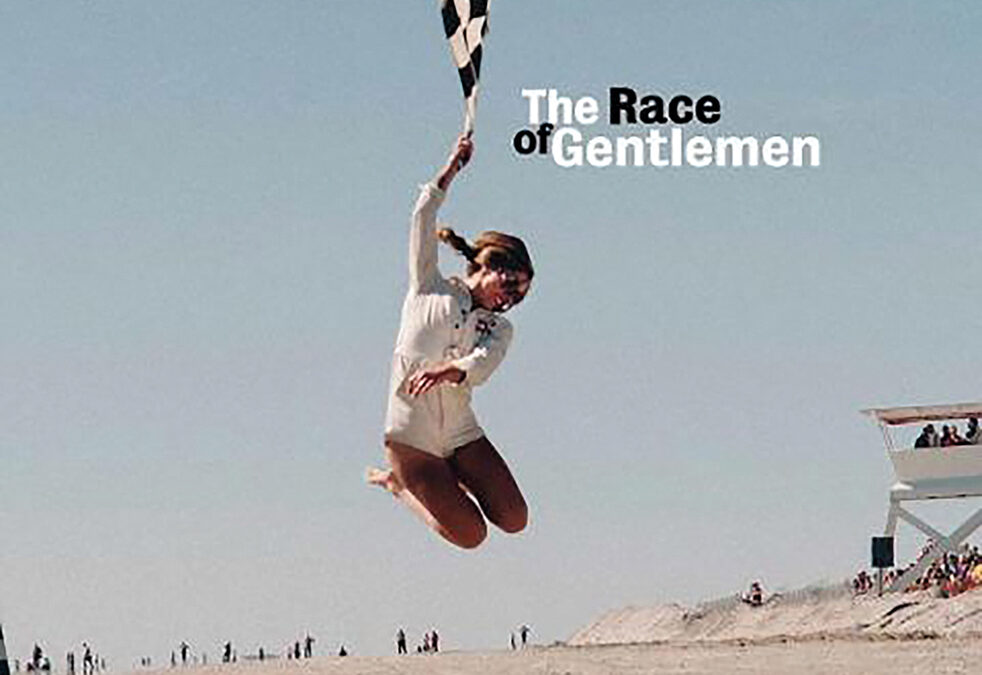
In the 1940s and ’50s, Hot Rodders gathered along America’s shores to compete in beach sprints. The Oilers CC/MC Club has brought back ‘The Race of Gentlemen’ on the beach of Wildwood, New Jersey since 2011, reviving the legendary East Coast tradition.
There are loud engine noises coming off what looks like a cast-iron bathtub on wheels. It’s a 1934 Ford Hot Rod heading towards the beach in Wildwood, new Jersey. Meanwhile, the rules of the race are being announced to the spectators and riders from a lifeguard tower. In order to participate in ‘The Race of Gentlemen’ (aka TROG), many have come from far and wide, bringing their pre-1935 American cars. These vintage cars are also restricted to replacement or add-on parts from the early 1950s at the latest. Meanwhile, the motorcycles all date from before 1947.
‘The world as a picture’ fascinates the artist; the gleaming chrome of the car lacquer, car races in salt deserts or the aesthetics of the daily life in New York. Johannes Huwe’s work lies between documentary-style precision and surreal staging. As in his last book World of Speed all photos were shot with a medium format Hasselblad camera.
Text in English and German.
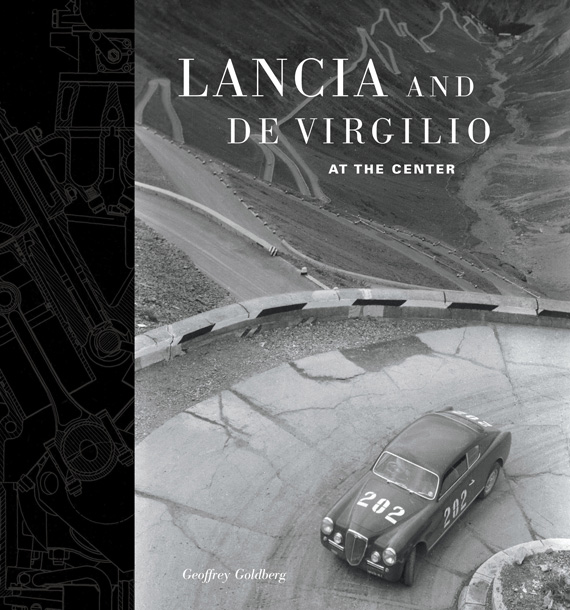
In the years following the Second World War, Lancia was the most innovative automotive company in Italy, if not in the world. The Lancia cars were technically advanced, with an elegant and competitive design on the track. For more than four decades, Francesco de Virgilio was one of the primary figures in the history of Lancia. De Virgilio entered the company as a young engineer in 1939, becoming a member of the Lancia family, when he married the niece of the founder Vincenzo Lancia, in 1947. In Lancia and de Virgilio, the author Geoffrey Goldberg examines the life and career of De Virgilio from multiple perspectives. Drawing on a large number of original documents, technical drawings and photographs from the archives of the De Virgilio family, Goldberg reveals the essential role of De Virgilio in the projects that defined Lancia during its best years in the 1940s and 50s. These include the development of the first production V6 engine, launching and improvement of the Lancia Aurelia, and the management of the short racing program of the company, which produced the classic D50 Formula One car. In addition to engineering and competitions, De Virgilio was directly involved in the events that effected the management and position of Lancia in the Italian automotive industry. In 1955, the family released its control of the company, leading to its eventual acquisition by Fiat in 1969. Through all these upheavals, De Virgilio continued to experiment and innovate, working on multiple projects, from diesel engines for trucks to the first versions of the rally car Stratos in the 1970s. Whatever the assignment, his persistent search for excellence remained a constant element defining Lancia, up to his departure from the company in 1975. Despite his technical successes and his popularity within the company, De Virgil’s contributions have been widely neglected to date.
Produced with the support of the RevS Institute for Automotive Research, Lancia and de Virgilio is the product of more than six years of meticulous research. The book is illustrated with hundreds of unpublished photographs that depict the images of Francesco de Virgilio at work, on the track and at home with his family, as well as dozens of drawings, projects and other finds. In addition to this abundance of details and information, the book, also captures the vibrant spirit of Italian, culture and society during the post-war period. Lancia and de Virgilio provides unique insight into both automotive and social history. The book was greatly appreciated by enthusiasts: it won several awards, including the Cugnot Award of the Society of Auto Historians for the best book of the year. It was also reviewed by the New York Times and the Republic, a rather exceptional event for a book on a company and its history already seventy years in the past.
This limited edition reprint is an opportunity not to be missed for those who did not secure the first edition in 2014.
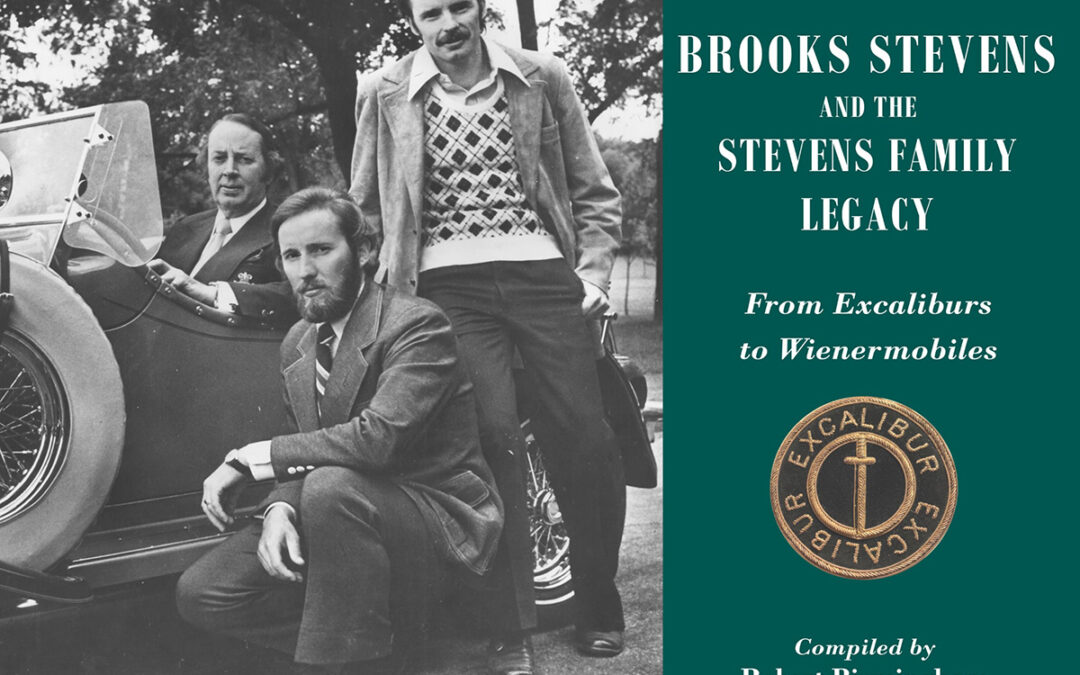
Over the years, Brooks Stevens’ amazing career as an innovative industrial designer has been recorded in countless articles and several books but now, for the first time, a comprehensive record of his love for automobiles is defined in Brooks Stevens and the Stevens Family Legacy – From Excaliburs to Wienermobiles.
Brooks’ sons, David and William “Steve” Stevens, played key roles from the mid-1960s through the 1980s and yet a great many people are unaware of their invaluable contributions, which are presented between these pages.
From his first car, a Ford Model T given to him by his father as a reward for accomplishing a challenge, Brooks and his associates designed a series of special vehicles commissioned by Studebaker and Kaiser Frazer, by wealthy industrials, entertainment stars, and friends. The first Excalibur J cars went on to win an SCCA National Championship in 1958, a series of passenger cars derived from the original 1964 Mercebaker, soon after to be renamed the Excalibur SS, and the infamous Oscar Mayer Wienermobiles.
Celebrities come and go throughout this history: entertainers Jackie Gleason and Phyllis Diller, successful race drivers Al Unser, Jr., Jim Jeffords, John Fitch, Jerry Hansen, Carl Haas, Fred Wacker, and Roger Penske, “father” of the Corvette Zora Arkus-Duntov, and also designer/constructors “Dutch” Darrin and John DeLorean are included. Prominent Milwaukee and Wisconsin socialites, industrialists, and business leaders are also present: William Woods Plankinton, Fred Miller, Fred Stratton, Sr., Dan Parker, Ralph Evinrude, and David Uihlein, to name but a few.
Color renderings designed to improve Road America’s facility during the early years and experiences at Le Mans, Sebring, and American sports car tracks from Watkins Glen in New York to Sears Point in California and dozens of others in between are interesting. Excalibur race results are recorded by date.
There is much more of interest for even the occasional classic automobile buff, including the history, from its roots in earlier buildings, to opening night of the Brooks Stevens Automotive Museum in Mequon, Wisconsin, right on up to its eventual closing.
Full color with dozens of photos.

The New York Times bestselling author of Bitter Brew chronicles the birth and rise to greatness of the American auto industry through the remarkable life of Harley Earl, an eccentric six-foot-five, stuttering visionary who dropped out of college and went on to invent the profession of automobile styling, thereby revolutionized the way cars were made, marketed, and even imagined.
Harleys Earl’s story qualifies as a bona fide American family saga. It began in the Michigan pine forest in the years after the Civil War, traveled across the Great Plains on the wooden wheels of a covered wagon, and eventually settled in a dirt road village named Hollywood, California, where young Harley took the skills he learned working in his father’s carriage shop and applied them to designing sleek, racy-looking automobile bodies for the fast crowd in the burgeoning silent movie business.
As the 1920s roared with the sound of mass manufacturing, Harley returned to Michigan, where, at GM’s invitation, he introduced art into the rigid mechanics of auto-making. Over the next thirty years, he functioned as a kind of combination Steve Jobs and Tom Ford of his time, redefining the form and function of the country’s premier product. His impact was profound. When he retired as GM’s VP of Styling in 1958, Detroit reigned as the manufacturing capitol of the world and General Motors ranked as the most successful company in the history of business.
Knoedelseder tells the story in ways both large and small, weaving the history of the company with the history of Detroit and the Earl family as Fins examines the effect of the automobile on America’s economy, culture, and national psyche.